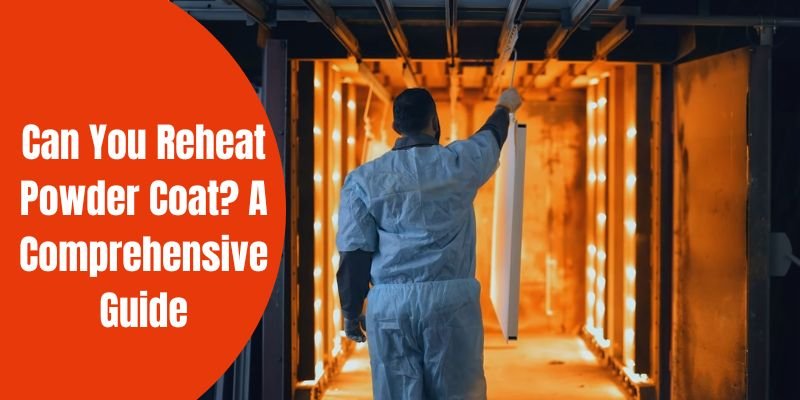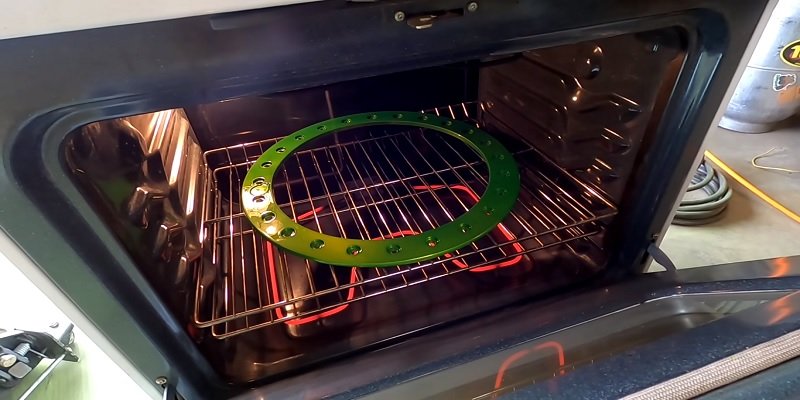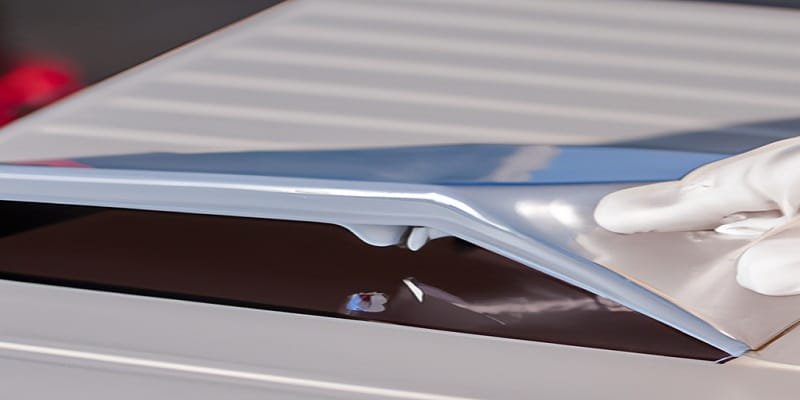Yes, you can reheat powder coat. Powder coating is a finishing process that involves applying a dry powder to a surface and then heating it to create a durable, protective coating. If for any reason the powder coat needs to be reheated, such as to make repairs or to achieve a different finish, it is possible to do so.

Why Reheating Powder Coat Is a Concern
Reheating powder coat can lead to a variety of issues that can affect the overall quality and durability of the finish. Here are a few reasons why reheating powder coat is a concern:
1. Adhesion Issues
Reheating powder coat can cause adhesion issues. This is because the heat can cause the powder to melt and then re-solidify, which can affect the adhesion of the powder coat to the surface. This can lead to bubbling, cracking, and peeling of the finish.
2. Color Changes
Reheating powder coat can also cause color changes. This is because the heat can cause the pigments in the powder to break down and change color. This can result in an uneven or discolored finish.
3. Reduced Durability
Reheating powder coat can also reduce the durability of the finish. This is because the heat can cause the powder to break down and become less resistant to wear and tear. This can lead to scratches, chips, and other damage to the finish.
Overall, reheating powder coat is not recommended as it can lead to a variety of issues that can affect the quality and durability of the finish. If you need to make any changes to the finish, it is best to strip the existing powder coat and apply a new coat.
Effects of Reheating Powder Coat
Physical Changes
When you reheat powder coat, there are several physical changes that can occur. These changes can affect the overall appearance and quality of the coating. Here are some of the physical changes you can expect:
- Color Change: The color of the powder coat can change when it is reheated. This can be due to a variety of factors, including the temperature and duration of the reheating process.
- Texture Change: The texture of the powder coat can also change when it is reheated. This can result in a rough or uneven surface, which can affect the overall appearance of the coating.
- Adhesion Issues: Reheating powder coat can also cause adhesion issues. The coating may not adhere properly to the surface, resulting in peeling or flaking.
Chemical Changes
In addition to physical changes, there are also chemical changes that can occur when you reheat powder coat. These changes can affect the durability and performance of the coating. Here are some of the chemical changes you can expect:
- Degradation: Reheating powder coat can cause the coating to degrade. This can result in a loss of performance and durability.
- Chemical Reactions: The heat from reheating powder coat can cause chemical reactions to occur. These reactions can alter the composition of the coating, which can affect its performance.
- Toxic Fumes: When powder coat is reheated, it can release toxic fumes. These fumes can be harmful to your health, so it is important to take proper safety precautions when reheating powder coat.
Overall, reheating powder coat can have a variety of physical and chemical effects. While it is possible to reheat powder coat, it is important to consider the potential risks and drawbacks before doing so.
Proper Methods to Reheat Powder Coat

Temperature Control
When reheating powder coat, it is essential to maintain proper temperature control. Follow the manufacturer’s guidelines for the recommended temperature range. Use a suitable heat source, such as an oven or infrared heater, that allows you to accurately monitor and adjust the temperature. Ensure that the temperature remains within the specified range throughout the reheating process to achieve the desired results.
Time Management
Reheating powder coat requires careful timing. Follow the manufacturer’s instructions regarding the recommended reheating time. Overheating or underheating can adversely affect the quality of the coating. Set a timer and monitor the process closely to avoid overheating or prolonged exposure to heat.
Precautions While Reheating Powder Coat
Safety Measures
When reheating powder coat, prioritize safety. Wear appropriate protective gear, such as gloves and safety goggles, to protect yourself from potential hazards. Ensure that the area is well-ventilated to prevent inhalation of fumes. Follow proper safety protocols to avoid accidents and injuries.
Equipment Handling
Handle the equipment used for reheating powder coat with care. Ensure that the oven or heat source is clean and free from any contaminants that may affect the powder coat. Use tools specifically designed for handling and transferring coated objects to prevent damage or mishaps.
Is It Possible to Remove Powder Coat Using Reheating Methods?
When it comes to removing powder coat, the best method for removing powder coat is through reheating. By subjecting the coated object to high temperatures, the powder coat particles begin to soften and can be easily stripped away. Using this method ensures effective removal without causing any damage to the underlying surface.
Alternatives to Reheating Powder Coat
In some cases, reheating powder coat may not be necessary or feasible.
Alternatives include
- Touch-up: If only a small area of the powder coat requires attention, consider using touch-up methods instead of reheating the entire surface. Touch-up paints or powders can be applied to specific areas to repair minor imperfections or damage.
- Repowder Coating: If the existing powder coat is severely damaged or unsatisfactory, it may be best to remove the old coating and apply a new powder coat. This ensures a fresh and uniform finish without the need for reheating.
Always consult with professionals or refer to the manufacturer’s guidelines for specific instructions on reheating powder coat or exploring alternative solutions.


